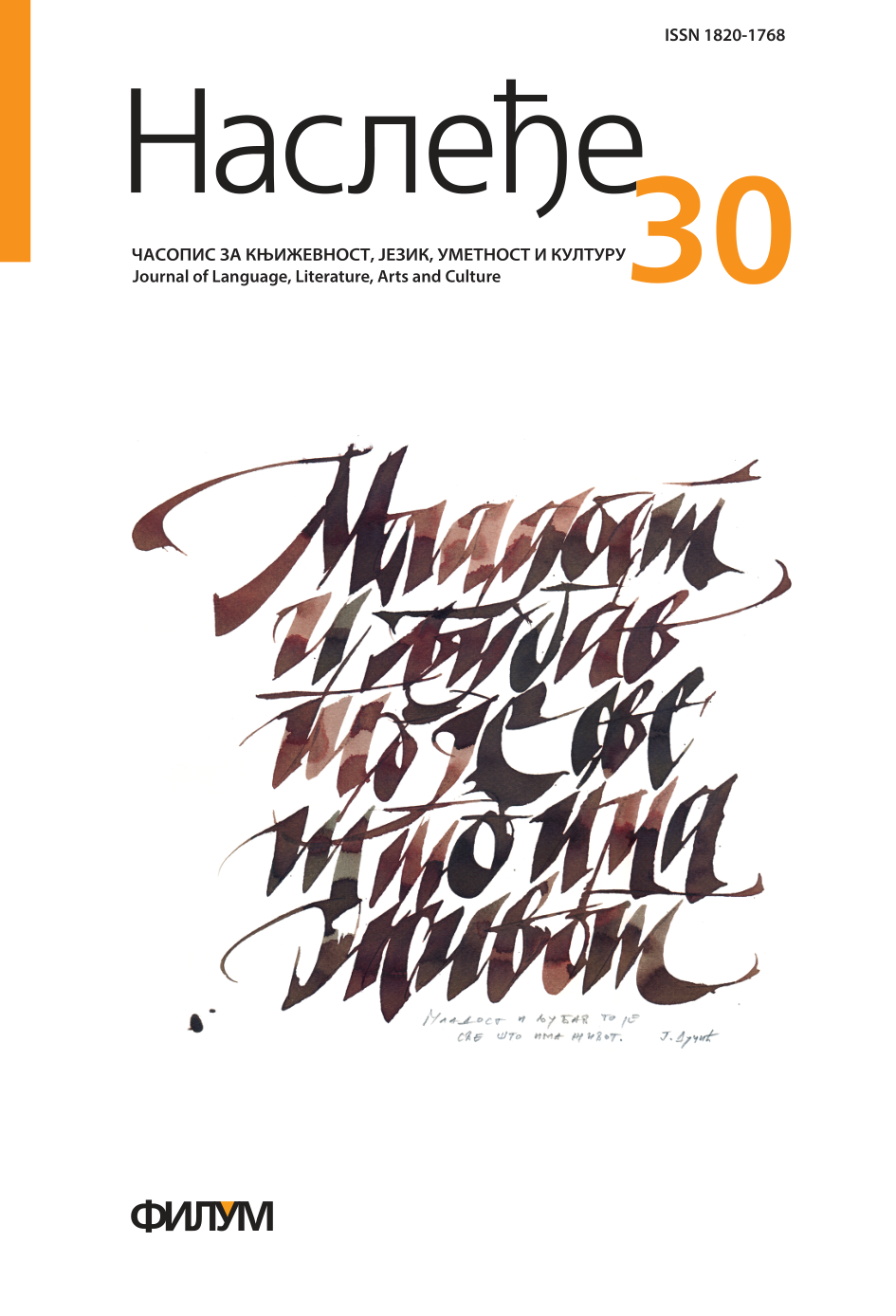SEQUENCE OF TENSES IN ENGLISH AND SERBIAN REPORTED STRUCTURES
THEORETICAL AND METHODOLOGICAL ASPECTS IN SERBIAN-ENGLISH TRANSLATION PRACTICE
Keywords:
sequence of tenses, translation, translation practice, reported speech, higher educationAbstract
This paper aims to provide an account of theoretical principles related to the understanding of the so-called “sequence of tenses” phenomenon and practical issues occurring in treating reported discourse structures in Serbian-English translation classes at the university level. After a brief exposition of grammatical mechanisms concerning the phenomenon, the authors progress to explore the main sources of problems related to the application of sequence of tenses in translation practice classes. It has been established that the chief obstacles can be classified in three mutually dependent spheres: a) pedagogical sphere (use of out-of-date theoretical approaches and reference books); b) content sphere (lack of semantic differentiation between preterital and non-preterital temporal domains in English, contextual dependence of reported structures); c) stylistic sphere (introduction of narrative perspectivization in the analysis, orthographic particularities, application of free indirect discourse). Having examined the possible causes of errors, the authors offer a set of guidelines which should be followed to ensure the appropriate interpretation of analysed structures and full adoption of principles governing the sequence of tenses.
References
Binnick 1991: R. I. Binnick. Time and the verb: a guide to tense and aspect. Oxford: Oxford University Press.
Caenepeel and Moens 2011: M. Caenepeel and M. Moens, Temporal structure and discourse structure, Munchen: Tense and Aspects in Discourse, edited by Co Vet & Carl Vetters, Munchen: Walter de Gruyter, 5-20.
Celce-Murcia and Larsen-Freeman 1999: M. Celce-Murcia & D. Larsen-Freeman (with Williams, Howard), The Grammar Book – An ESL/EFL Teacher’s Course, 2nded, Boston MA: Heinle and Heinle Publishers.
Comrie 1985: B. Comrie, Tense. Cambridge: Cambridge University Press.
Declerck 1990: R. Declerck, Sequence of tense in English: Folia Linguistica 24 (3-4): 513-544.
Declerck 1995: R. Declerck, Is there a relative past tense in English?: Lingua 97(1): 1-36.
Eckersley and Eckersley 1960: C. E. Eckersley and J. M.Eckersley, A comprehensive English grammar for foreign students, London: Longman.
Fludernik 1993: M. Fludernik, The Fictions of Language and the Languages of Fiction: The linguistic representation of speech and consciousness, London and New York: Routledge
Karavesović 2010: D. Karavesović, Slobodni neupravni govor – englesko-srpske paralele, Kragujevac, Nasleđe 15/2, Kragujevac, 43-54.
Karavesović, Bubanja 2012: D. Karavesović i N. Bubanja, Problemi književnog prevođenja slobodnog neupravnog diskursa sa engleskog na srpski jezik. Srpski jezik – studije srpske i slovenske, (17), 147-160.
Kovačević 2012: M. Kovačević, O gramatičko-stilističkom terminosistemu tuđeg govora. Srpski jezik – studije srpske i slovenske, (17), 13-38.
Leech 1971: G. Leech, Meaning and the English verb, London: Longman, 1971.
Palmer 1988: F. R. Palmer, The English verb, 2nd ed. London: Longman.
Ružić 2006: V. Ružić, Dopunske rečenice u savremenom srpskom jeziku (2). Zbornik Matice srpske za filologiju i lingvistiku, 49(2), 103-266.
Stanojčić et al 1989: Ž. Stanojčić, Lj. Popović, S. Micić, Savremeni srpskohrvatski jezik i kultura izražavanja, Beograd – Novi Sad, Zavod za udžbenike i nastavna sredstva – Zavod za izdavanje udžbenika,.
Swan 2005: M. Swan, Practical English Usage, Oxford: Oxford University Press.
Thomson, Martinet 1986: A. J. Thompson and A. M. Martinet, A Practical English Grammar, 4thed, Oxford: Oxford University Press.
Quirk et al. 1985: R. Quirk, S. Greenbaum, G. Leech, J. Svartvik, A Comprehensive grammar of the English language. London: Longman.
Sakita 2002: T. I. Sakita, Reporting discourse, tense, and cognition. Oxford: Elsevier Science.






